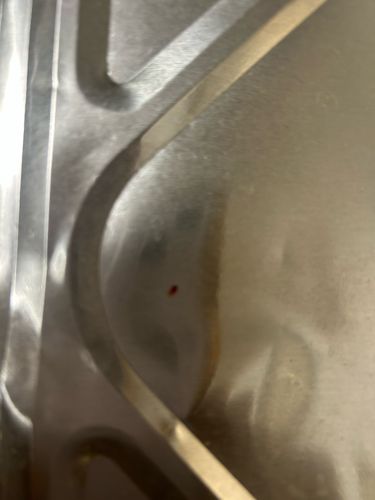Spider Mite (Tetranychus urticae, Two-spotted Spider Mite)
Scientific Name: Tetranychus urticae
Order & Family: Order: Trombidiformes, Family: Tetranychidae
Size: Approximately 0.4 to 0.5 mm (adults), barely visible to the naked eye. The red spot in the image is more likely fecal matter or a crushed mite than a living specimen, as live spider mites are usually green, yellow, or red-orange depending on diet and age.

Natural Habitat
Found on a wide variety of plants, both indoors (houseplants) and outdoors (garden plants, agricultural crops, trees, shrubs). They thrive in hot, dry conditions.
Diet & Feeding
Plant sap; they feed by piercing plant cells and sucking out the contents, creating characteristic stippling (small dots) on leaves.
Behavior Patterns
Spider mites reproduce quickly, especially in warm and dry conditions. They spin fine silk webbing, particularly when populations are high, which helps protect them from predators and pesticides. They often feed on the undersides of leaves.
Risks & Benefits
Risks: Significant agricultural pests that can cause severe damage to crops and ornamental plants, leading to reduced yields or plant death if infestations are heavy. They are not harmful to humans or animals directly. Benefits: None significant to humans, but they are a food source for some predatory mites and insects.
Identified on: 8/19/2025